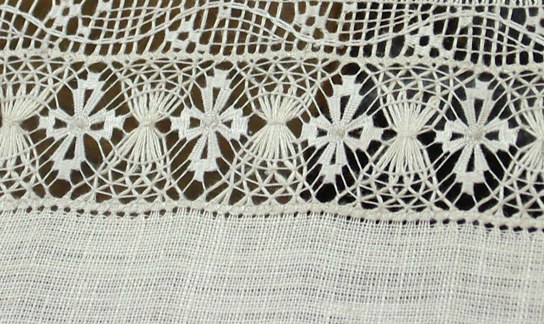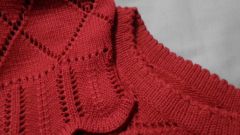You will need
- - cloth of tissue;
- hook;
- - thread.
Instruction
1
Choose a yarn and hook to work. The color of thread depends on your taste. They may be suitable in tone to the napkin or be contrasting. But when you select the hook you should take into account the quality of the fabric, which is made of tissue paper. So for dense materials (linen, curtain fabrics etc.) take the hook not more than 1.5, and cotton yarn ("iris", "Snowflake", etc.). If the material is thin (silk, Batiste, etc.) – suitable for hooks with numbers from 0.5 to 0.7 and a bobbin thread No. 40-60.
2
Before you start to tie a cloth napkin, treat the edges. To do this, make a hem equal to the height of the column without nakida and iron her iron. If fabric-based thin – the edges roll Runicom, this will prevent them from further unraveling. In addition, you can treat the fabric looped suture or fix a hem with a hemstitch.
3
After you tuck the edges, again iron the fabric and then iron around the perimeter with a front side tie its columns without nakida. The distance between the places of entry of the hook into the material is determined by the thickness of the knitting tool and yarn: the larger the diameter, the longer the desired indentation. The step size should on average be 2 to 4 mm. During operation, make sure that the canvas was not pulled together.
4
Select the pattern you want to tie round a napkin. In this case, note the number of columns of the first row. Compare rapport your chosen lace trim with the received number. Ideally, these two numbers should match each other. Otherwise, you have to distribute the pattern edges on the perimeter, or choose another pattern. The lace on the chosen scheme, start to knit from any angle (if available).
Note
You can tie the lace separately from the swipe and then it to sew. Just carefully connect the tissue and associated paintings.
Useful advice
If you wish, you can invent your own scheme for binding the edges.
So smoothly and beautifully tie the edge columns without nakida, enter the hook into the cloth account threads of the fabric.
So smoothly and beautifully tie the edge columns without nakida, enter the hook into the cloth account threads of the fabric.

